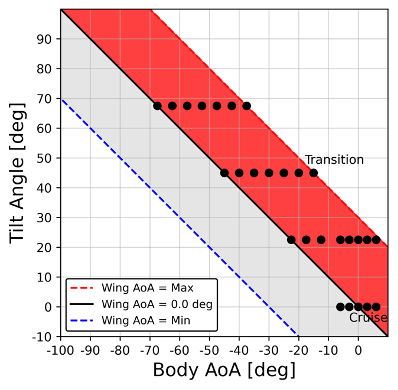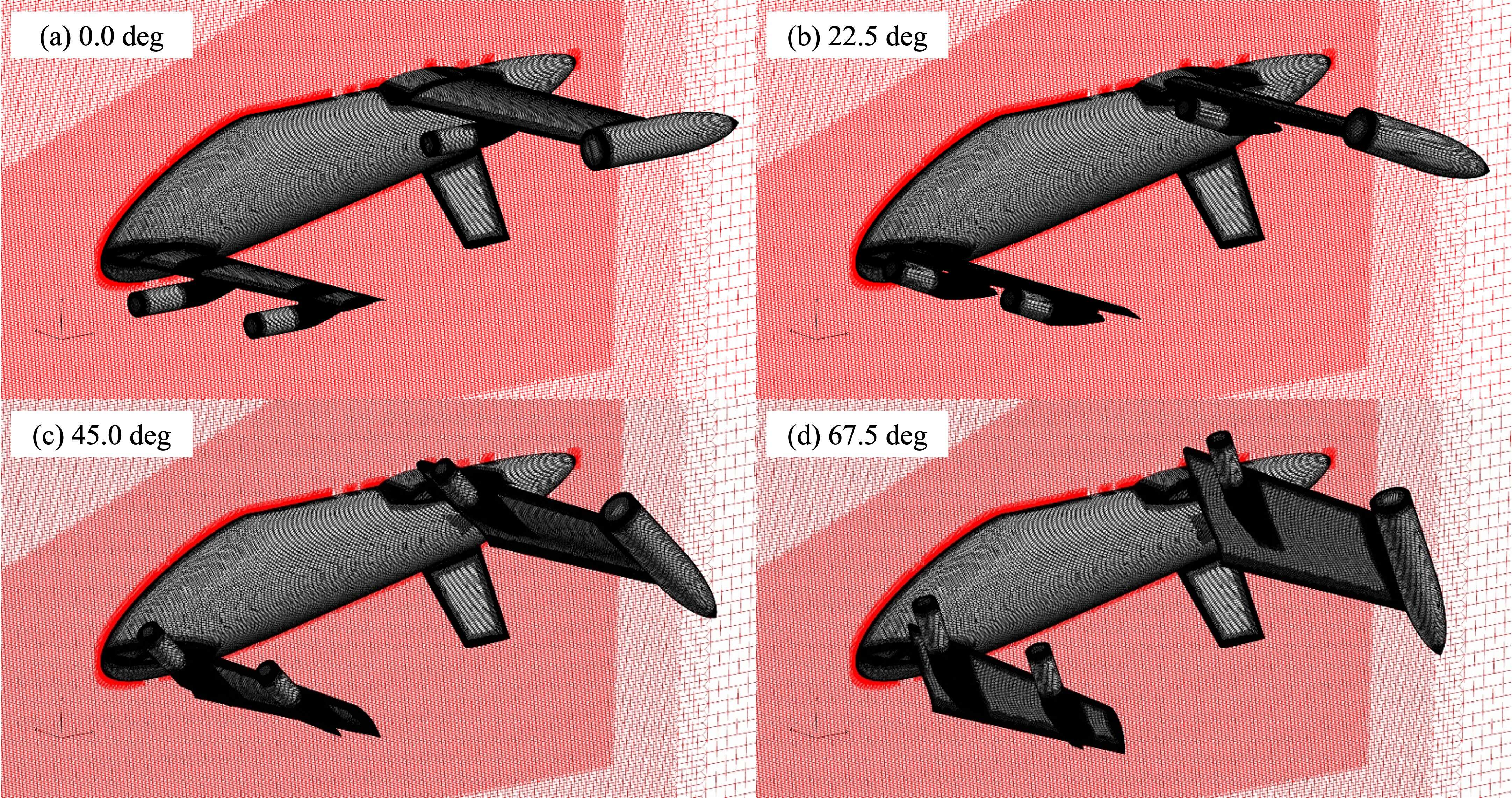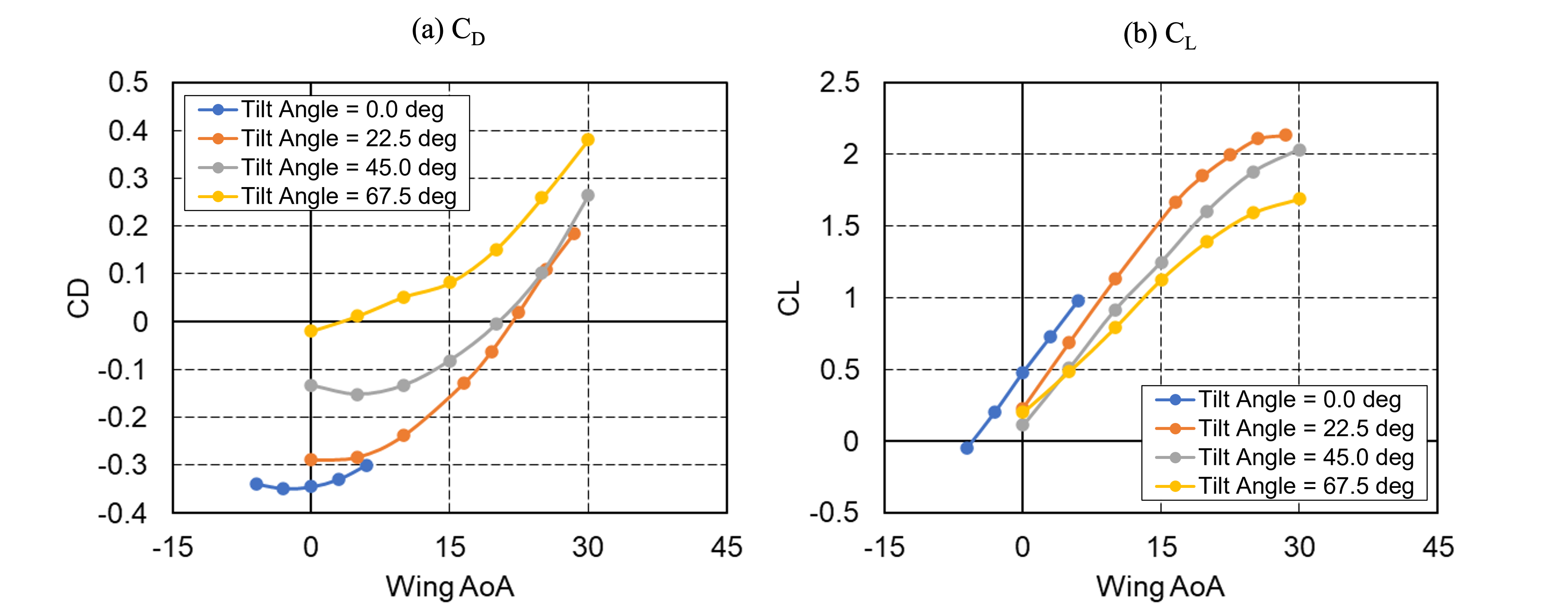Numerical Prediction of aerodynamic characteristics over the eVTOL Configurations
JAXA Supercomputer System Annual Report February 2024-January 2025
Report Number: R24EDA201G25
Subject Category: Aeronautical Technology
- Responsible Representative: Kanako Yasue
- Contact Information: Kanako Yasue(yasue.kanako@jaxa.jp)
- Members: Masatoshi Kanayama, Yuki Kishi, Atsushi Shinozuka, Masayuki Sasaki, Kanako Yasue
Abstract
Various types of eVTOL (electric vertical take-off and landing aircraft) have been proposed to develop new mobility markets such as air taxis, and global competition is intensifying. However, the development history of eVTOL is relatively short, and there is little data for designing products that meet the various needs. Therefore, numerical simulations are expected to be used as a means of compensating data.
In this study, Unsteady Reynolds-averaged Navier-Stokes analysis was performed on the LA-8 geometry and modified LA-8 geometry (WT-01) toward the evaluation of aerodynamic characteristics of a distributed electric propulsion vertical takeoff and landing aircraft.
Reference URL
Please refer to 'Numerical simulation technology | Fundamental research | Aviation Technology Directorate'.
Reasons and benefits of using JAXA Supercomputer System
JSS is necessary to complete large scale numerical simulations of unsteady phenomena and to understand it in short time span.
Achievements of the Year
In this study, aerodynamic analysis of a tandem tilt-wing eVTOL (electric Vertical Take Off and Landing aircraft) was conducted using Unsteady Reynolds-Averaged Navier-Stokes (URANS) analysis, specifically targeting the transition flight phase. A 74% scale model of the NASA LA-8 aircraft, with tilt angles set at 22.5 degrees, 45.0 degrees, and 67.5 degrees, was analyzed (Fig, 1 and 2). It was found that the aerodynamic characteristics during continuous transition flight are qualitatively determined by the angle of attack of wings, regardless of the tilt angle (Fig, 3).
Publications
N/A
Usage of JSS
Computational Information
- Process Parallelization Methods: MPI
- Thread Parallelization Methods: N/A
- Number of Processes: 480 - 2016
- Elapsed Time per Case: 200 Hour(s)
JSS3 Resources Used
Fraction of Usage in Total Resources*1(%): 0.17
Details
Please refer to System Configuration of JSS3 for the system configuration and major specifications of JSS3.
| System Name | CPU Resources Used(Core x Hours) | Fraction of Usage*2(%) |
|---|---|---|
| TOKI-SORA | 4164282.54 | 0.19 |
| TOKI-ST | 4842.60 | 0.00 |
| TOKI-GP | 0.00 | 0.00 |
| TOKI-XM | 0.00 | 0.00 |
| TOKI-LM | 319.18 | 0.02 |
| TOKI-TST | 0.00 | 0.00 |
| TOKI-TGP | 0.00 | 0.00 |
| TOKI-TLM | 0.00 | 0.00 |
| File System Name | Storage Assigned(GiB) | Fraction of Usage*2(%) |
|---|---|---|
| /home | 1428.28 | 0.96 |
| /data and /data2 | 133498.58 | 0.64 |
| /ssd | 2510.00 | 0.13 |
| Archiver Name | Storage Used(TiB) | Fraction of Usage*2(%) |
|---|---|---|
| J-SPACE | 7.01 | 0.02 |
*1: Fraction of Usage in Total Resources: Weighted average of three resource types (Computing, File System, and Archiver).
*2: Fraction of Usage:Percentage of usage relative to each resource used in one year.
ISV Software Licenses Used
| ISV Software Licenses Used(Hours) | Fraction of Usage*2(%) | |
|---|---|---|
| ISV Software Licenses(Total) | 98.44 | 0.07 |
*2: Fraction of Usage:Percentage of usage relative to each resource used in one year.
JAXA Supercomputer System Annual Report February 2024-January 2025





